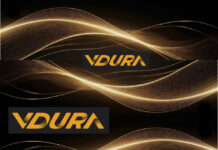Interview. Blocks & Files sat down with Jason Hardy, Hitachi Vantara Vice President and CTO for AI, to discuss the company’s ongoing storage strategy refresh and how it’s unifying its high-end, mainframe-class enterprise block storage with a broadening VSP One mid-range line. The conversation also covered Hitachi Vantara’s embrace of all-flash alongside disk-focused storage, its hybrid on-premises/public cloud approach, evolving business models, and the rise of generative AI.
Blocks & Files: Hitachi Vantara is now back to its roots as a really solid enterprise storage array provider with a VSP One branding over everything. What’s the strategy going forward?
Jason Hardy: The strategy is simplifying our portfolio and modernizing it so that we can address software-defined and how all of our customers are demanding that we step into some modern approaches and that’s what we’re doing with the portfolio – while still not forgetting about our roots of being world-class, being stable as the most stable platform on the market. Having all the guarantees that we wrapped around it and evolving those and just not forgetting who we were. So going back to building, as you said, a damn fine product.

Blocks & Files: HPE just put out a release saying they’ve had an XP8 (OEM’d Hitachi Vantara VSP) array running for ten years without a stop.
Jason Hardy: Don’t doubt it. It just keeps going. It’s like the Energizer bunny.
Blocks & Files: Yet you look for the XP87 array on HP’s website and it’s hard to find.
Jason Hardy: It’s not just been forgetting who we are. Japan is closer in with us now. So we’ve incorporated the Japan product engineering group into this. We are operating as a more cohesive organization. There’s a single product engineering and management group. We always had a single product engineering group, but they were not directly tied in and now it’s all under Octavian Tanase’s umbrella. It’s going back to saying, listen, we can’t forget about what we’re trying to accomplish here.
Blocks & Files: How many customers does Hitachi Vantara have?
Jason Hardy: Last count on our Rolodex is still over 15,000 customers.
Blocks & Files: VAST Data has come along, file and not block, but still very enterprise. HPE has, I think, stumbled a little bit. It’s trying to simplify its product range, but at the moment Alletra is a simple brand of radically different products as far as I can see. HPE hasn’t unified the actual array hardware underneath at all. It’s possibly beginning to happen. NetApp pretty much stayed where it is. It’s got rid of SolidFire. StorageGRID is there, but basically it’s ONTAP forever. There’s Dell with PowerMax and IBM’s Flash System and DS8000. The DS8000 is basically a mainframe array and IBM doesn’t seem to want new customers.
Jason Hardy: One of the two out there.
Blocks & Files: And there seemed to be no moves to combine DS8000 and FlashSystem under one sort of branding or combine the hardware or anything like that. So in a way, you are like the old enterprise storage guard, restructuring yourself after VAST Data and Infinidat have come along, and so forth. Is that accurate?
Jason Hardy: I would say that’s accurate, yeah. I mean that these brands have created niches for themselves to operate inside of and created new ways of doing things that align with their product strategy. And we too are doing that. We are creating the VSP One portfolio, consolidating everything, bringing in a unified management and soon a unified data plane around it. We’re doing a lot to move into simplifying our portfolio while still being, again, those very robust features to provide block, file, and object, and how that all can cooperate and work together. And then being able to ultimately provide the outcomes that our customers need to support their traditional workloads from mainframe into OLTP and into that structured space. Now they’re evolving into the AI portfolio and we’re powering and supporting a lot of the AI work demand coming in.
Blocks & Files: There’s block and file and object in Hitachi Vantara’s product line. Are those three environments being brought more closely together? How is that going to happen?
Jason Hardy: Under VSP One, that’s what we’re doing now. So VSP One Block is where we started, which was the rebranding of the VSP portfolio. VSP One File is now bringing and unifying the file capabilities and management and, again, the data plane side of it to simplify and to bring them together, and then object. VSP One Object was announced [in November] to do the exact same thing.
Blocks & Files: I could think possibly of a single management plan above three silos: block, file, and object. Will you be able to move data between them?
Jason Hardy: Yes. And that’s what we’re doing a lot. Imagine file to object might be straightforward, block – still just let it operate. Now if we look at it from, and this goes to the rest of our portfolio, we have Pentaho* still. We have content intelligence. Some of these key products allow us to look inside the block ecosystem and say, “Hey, we can extract some of this data out and move it to something that’s more appropriate.”
And we’re doing that with some partner technologies as well. Suppose we have an Oracle environment. How can we do that? We can do that through Pentaho and our tooling and then bring that across and transform that into something that’s object-oriented. So that’s where, depending on what layer at the stack you look, we’ll have a lot of those capabilities to be able to address the evolving data demand from our customers.
Blocks & Files: Where does Hitachi IQ fit in with all this?
Jason Hardy: Hitachi IQ is us addressing the AI market and bringing in these technologies. Because it is compute, software, switching, and storage, it brings in VSP One object for density. It brings in our WEKA IO partnership, the content software for file to drive the demand for the GPU workload, and then to scale it to, again, whatever size required. But then it’s also tapping into VSP One File for source data.
It’s tapping into systems that are operating on the VSP One Block side like Oracle or SQL or whatever it is that’s operating from that more traditional workload, and pulling that data in to provide the point of view and relevance from an AI perspective. It’s a full engineered stack with also practices, frameworks, and blueprints of how to integrate in with the rest of the ecosystem. It has to support the holistic AI output that enterprises are looking at or thinking about.
Blocks & Files: Do you see a need for running any AI-type applications on the arrays themselves? VAST has started making noises about that.
Jason Hardy: Yes. They’ve started to look at how they can incorporate basically like a database on a file system. It’s an interesting idea, an interesting concept. There are some open source capabilities out there that can provide that, and it is something that we’re investigating.
Is there potential in this? We’re always investigating what’s next for us. Blending in that closeness of storage and compute, and confidential computing are all things that we look at, saying what is the potential for that?
But right now we’re focused on VSP One, getting that rock solid, getting that out to market, hitting on what our customers are asking for, getting SDS operational in the cloud, which it is. It’s like evolving that capability out and then driving in the AI space in a separate practice that we’ve created because it is a very specific conversation. But then pulling across all of those pieces that we have inside Vantara and then also pulling across what we have across the rest of the Hitachi ecosystem in the cloud.
Blocks & Files: Would you expect to see the block, file, and the object environments of Hitachi Vantara operating in the cloud so that your customers would have an absolutely seamless and hybrid experience?
Jason Hardy: Yes. I think ultimately we’ll evolve to that. Obviously if we look at VSP One File, it’s FPGA-driven, so it’s a little bit more complicated. However, looking at how we’re evolving file out, absolutely we can do that today, for example, with HCSF – content software for file. It’s very much cloud-aligned and it can utilize object storage and things like that in the cloud, whether it be VSP One object or S3 or something on-prem, or whatever combination thereof. And SDS (software-defined storage), the VSP One block SDS platform is very much capable of operating in the cloud.
Blocks & Files: How do you see Hitachi Vantara using generative AI in the future? For example, one of your customers may have four or five storage admins operating your kit, and I’m looking at them thinking they’re highly intelligent, well-trained people, but do I really want them moving volumes? Should I give them an AI tool so they can specify storage policies to the GenAI, which then initiates it, does its thing behind the scenes. Is that the sort of thing you might be thinking about doing?
Jason Hardy: Absolutely. We’re looking at a lot of options like that. We’re also looking at it from a supportability standpoint. These are things that we’re implementing now, such as how we can just improve on general customer service. We have a ton of information and telemetry. How can we use that to create a better customer service experience through a chat interface, through a localized capability?
Or through whatever that evolves into, but using that to improve on how our customers engage with us directly. And then also evolving that and looking at what the potential is to incorporate that into how it helps them drive from a manageability standpoint. What’s the automation that we can do? How can we bring in that more of a chat-style interface or whatever that evolves into, but having that level of sophistication attached to it.
Blocks & Files: So Hitachi Vantara customer support people could be getting a call saying, my VSP One array is doing something unexpected in the middle of night, whatever it happens to be. They might now use a generative AI interface to go search through Hitachi Vantara documentation to find out. Are you actually doing that now?
Jason Hardy: We’re in the middle of looking at implementing and piloting some of these functionalities, and this comes from a lot of what we’ve built outside of DORA and incorporating big Hitachi capabilities for support. We’ll even drink our own Champagne. These are the same things that we’re also working with our customers directly on to improve on their side of customer support or manufacturing or whatever it is. So it’s much the same as what we take out to the field is also what we’re focusing on internally.
Blocks & Files: Do you have conversations with Hitachi Vantara customers looking two years out, three years out, five years out, about what they would like the technology to do or where they see their needs going?
Jason Hardy: Yes, we have customer council, customer advocacy groups that say, “Hey, this is what we see today.” This is the trend that we’re seeing, whether it’s on the mainframe side or the open system side, or specific application or file or whatever. And we use that to help drive the decisions that we make and to the product as we go along. And, as well as what we observe from the market saying, “Hey, finger to the wind, it’s blowing this direction.” How can we help improve on that and innovate on top of it? Not just be a me-too, but how can we actually improve on what’s being offered to the market for theme A or theme B?
Blocks & Files: Do the customers say to you, we see a world where it’s going to be all flash in future with no disk drives at all, or do they say it’s going to be hybrid?
Jason Hardy: It’s about 50-50 on that, maybe 70-30, kind of in that range. But yes, we have some customers who are strictly flashing their datacenter and others are wanting that density/combination cost of disk drives. That’s why we haven’t given up spinning drives at all but why we are also releasing QLC (4bits/cell NAND). We see that the technology is there and we’ve improved, we’ve evolved our software to best utilize that as well.
So now we are meeting at that point where now we can take it to the market and still give our customers that reliability and everything that they come to expect from us with a technology like QLC.
Blocks & Files: From a technology perspective, do you see a need for really high-capacity QLC drives? Beyond 60 TB?
Jason Hardy: Absolutely. We’re already starting to see the trends that we’re going to be moving into 100-plus terabyte per drive. So I think we are still in the middle of a data explosion and AI, I think, is amplifying a lot of that. The density will still be there, but we also can’t trade density for low performance as well. So we need that fine balance. It’ll be the right thing in the right position. It won’t be one size fits all. We’ll still have our TLC (3 bits/cell) offering in some places. We’re still selling storage-class memory options for some of Optane, some other storage-class memory from Kioxia, their FL-class drive. We sell that with our parallel file system because we just need that high churn, high endurance drive.
VSP One object, a perfect example, needs to be super dense, but we want a flash capability now for it. Bringing in QLC to support that at that really high density, that’s a critical thing that we’re working towards. And that was announced with VSP One Object.
Blocks & Files: How about archiving data? What will you say to Hitachi Vantara customers who have a need to archive data. What should they do with it?
Jason Hardy: I think we’re finding that the archive is a more active part, or an active element, in the enterprises today than what it traditionally was. What was tape as an archive is no longer very viable from an active data perspective. In some cases, though, tape might be totally viable for cold, dark data.
I see archive playing more of an active role in the enterprise, but no longer the place where data goes to die. It’s just that next level of how data is interacted with. One can argue even an application that’s designed to use S3 directly is archiving in place because of the nature of how object storage provides that functionality.
It’s going to be the nature of the application and how it’s utilizing the underpinning storage that changes the definition almost of what is archive, and how am I treating this data? Am I archiving in place while still being active participant in how I’m using that data? Things like that. It’s a bit of an evolving theme.
Tape has been pushed down the storage hierarchy for data where we’ve got to keep it, but we’re not going to access it very much at all. But it’s got to be there. And we’ve got this new, more active archival layer of data which extends from object storage through to that, or even into the cloud and be a broker for that. And then it will use the cloud’s colder technologies. So there are a lot of options out there for archiving, and this is where having a proper data management strategy comes into play so that you’re using the right technology for the ultimate enterprise goal.
Blocks & Files: So, in a way, you can adopt particular archiving technologies as customers need them without pinning stacks and stacks of budget into developing a particular archive product that may not have a general need.
Jason Hardy: If you look at S3, it is a great example of how that enables some of these technologies. So if I have an S3 endpoint I can do tiering, I can do that integration.
Blocks & Files: It’s an abstraction layer of different hardware.
Jason Hardy: Exactly. And it’s much of what we’ve been doing already. So it’s not earth-shattering or anything like that. This has been a practice of ours since HCP (Hitachi Content Platform) adopted cloud as a tiering target.
Blocks & Files: Hitachi Vantara has erected its defenses against encroaching technologies from other people. You’re now on a par with NetApp with HPE. What’s the way forward? Would you be looking to sell to new customers or sell to new application areas within existing customers?
Jason Hardy: I think it’s both. We have a very loyal customer base. We love our customers. And they have an evolving enterprise need. Their enterprise ecosystem is not stagnant. So it’s having the right products. This is why Hitachi IQ is so relevant. It’s how to address that with our very loyal customer base.
But then also using that in combination of the VSP One simplification, our new mid-range block platforms and everything that we’re doing in there to address new markets as well. Being more partner-friendly now, having a complete reset of our partner engagement and really creating a product that helps them drive into that business from a channel and commercial business perspective, that kind of that area.
And then being able to still address the top end with the 5600 and our highest-end solutions and evolving that out. Being able to address, again, the unstructured side, and hybrid is big. So how are we supporting our customers hybrid ecosystems? Most of our customers operate in a hybrid ecosystem, and that’s why one of our main pillars is that hybrid solution being the number one hybrid solution provider out there.
We want to be supporting our customer’s data journey of what they’re deeming necessary to support their business.
Blocks & Files: Hitachi Vantara has no particular view about whether on-prem should basically be a ramp to the cloud or whether cloud applications should be repatriated on-prem. You are agnostic to this. You’ll support both.
Jason Hardy: We support both. And we support data movement in either direction, and we support even the retooling of applications into the cloud if necessary. Or taking our on-prem offer and wrapping it in an opex that allows for them to have that cloud-level consumption. With an on-prem technology, it’s up to our customers to make that decision. Now we will guide them, we will give them our best practices and our point of view on it, but ultimately that’s their decision. So we don’t want to alienate our customers if they make a decision one way or another.
It’s more about, all right, you’re stepping into this direction, great, how can we support you along the way? And then, hey, do you want to shift it over to the right a little bit or a left a little bit? It’s moving target; we will help you in that entire process.
Blocks & Files: All in all, you’re having a heck of a time?
Jason Hardy: I love my job. I love this company. I mean, I’ve been here long enough, but honestly, what (CEO Sheila Rohra) and Octavian and the whole new leadership regime have brought in has been this injection of energy and it’s like, all right, let’s innovate. Let’s go out and let’s do some amazing things together. So it’s been fantastic.
Bootnote
*Pentaho is Hitachi Vantara’s data integration, analytics, and business intelligence (BI) platform. It provides tools and capabilities to help organizations manage, process, analyze, and visualize data from diverse sources. Hitachi Vantara says Pentaho is particularly well-suited for building scalable data pipelines and supporting decision-making through data-driven insights.








